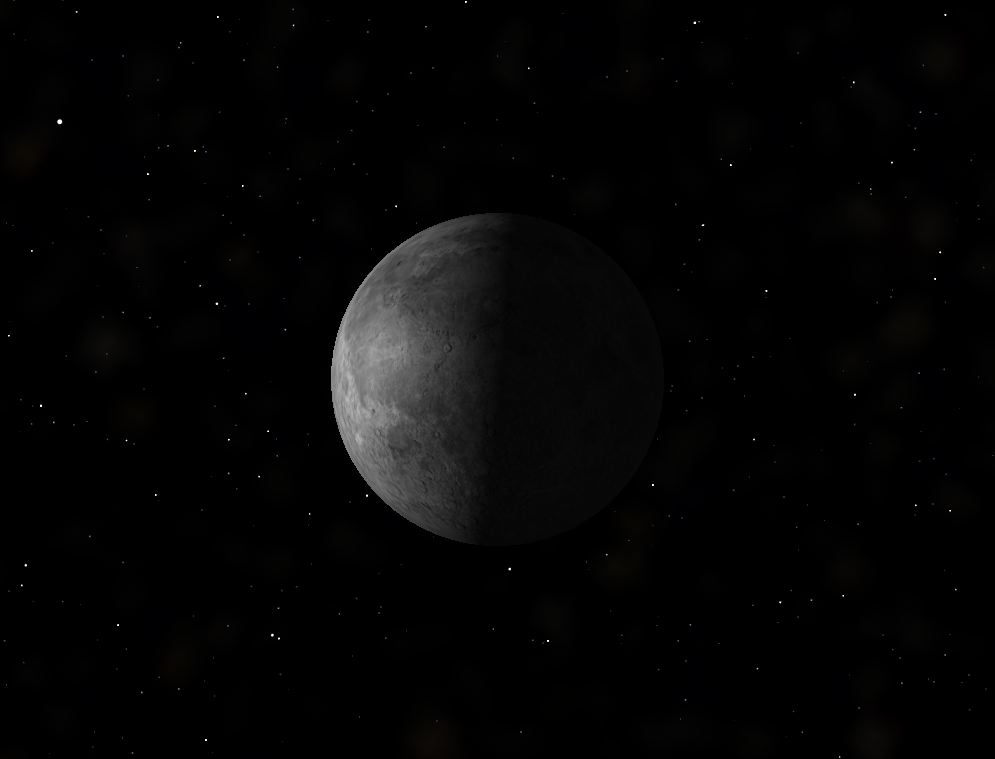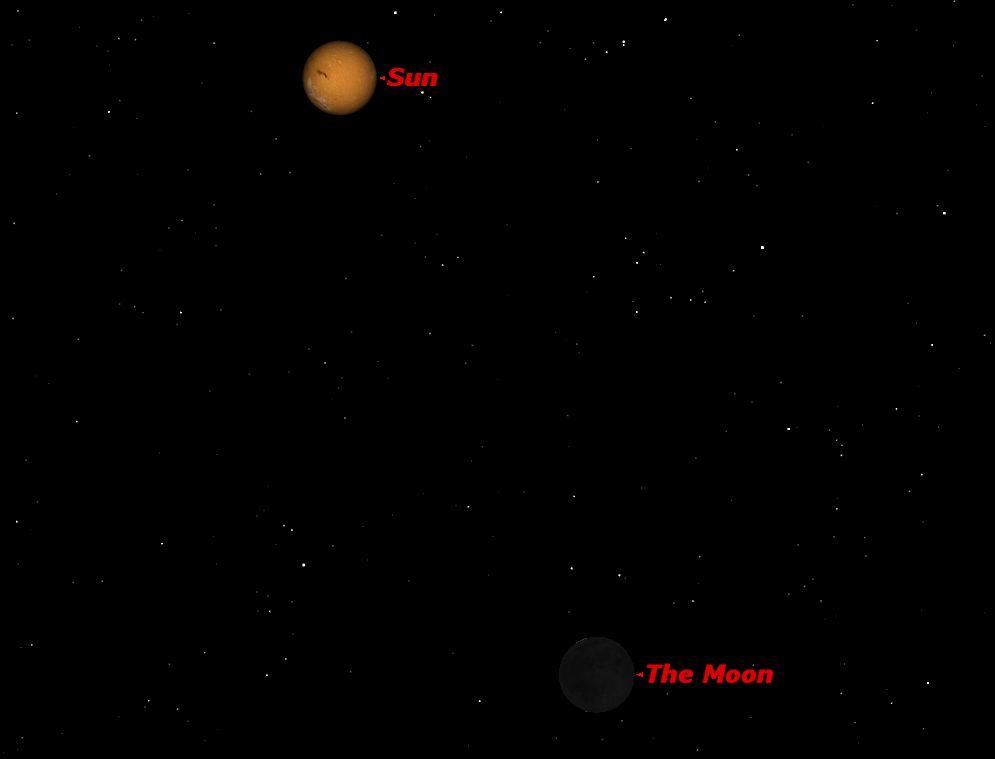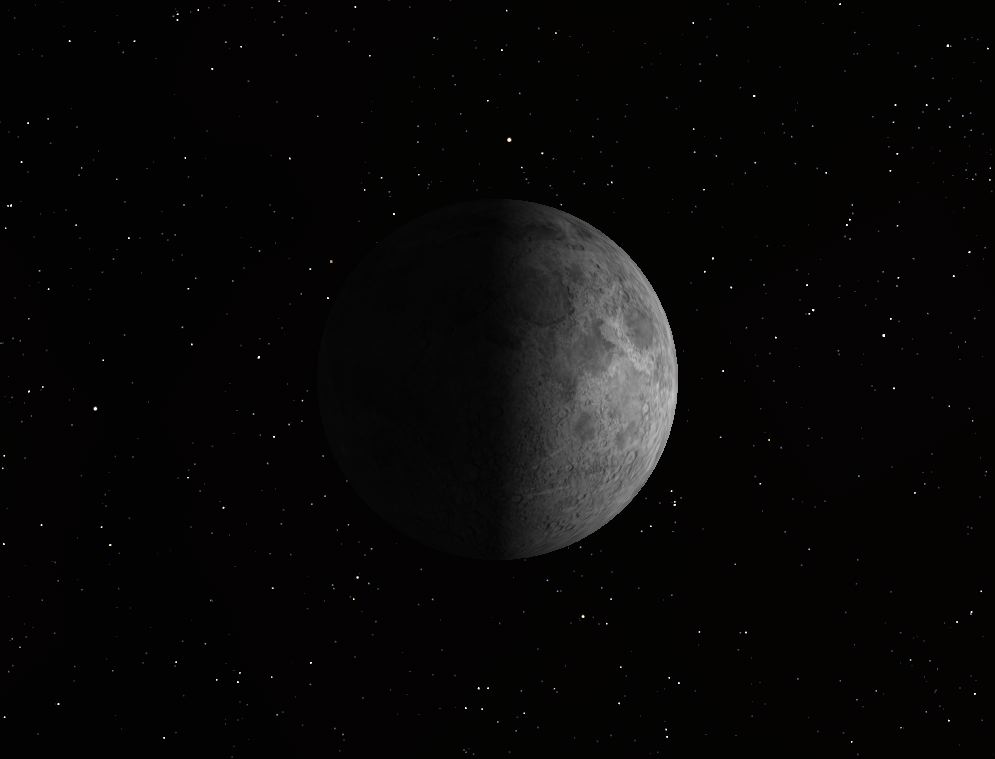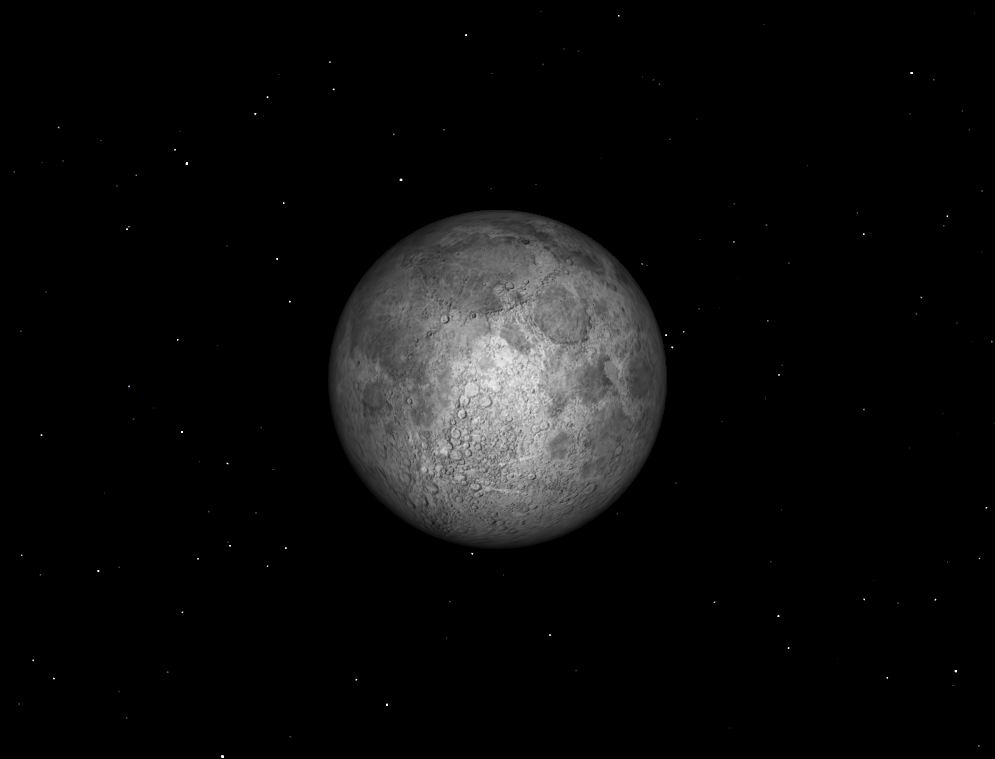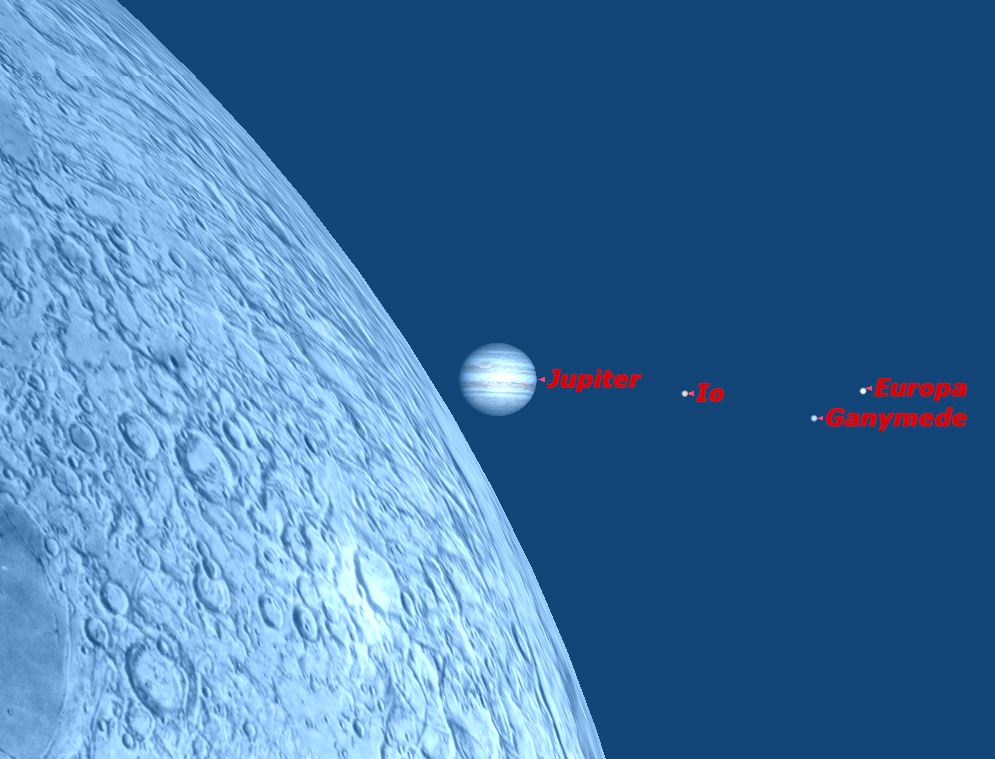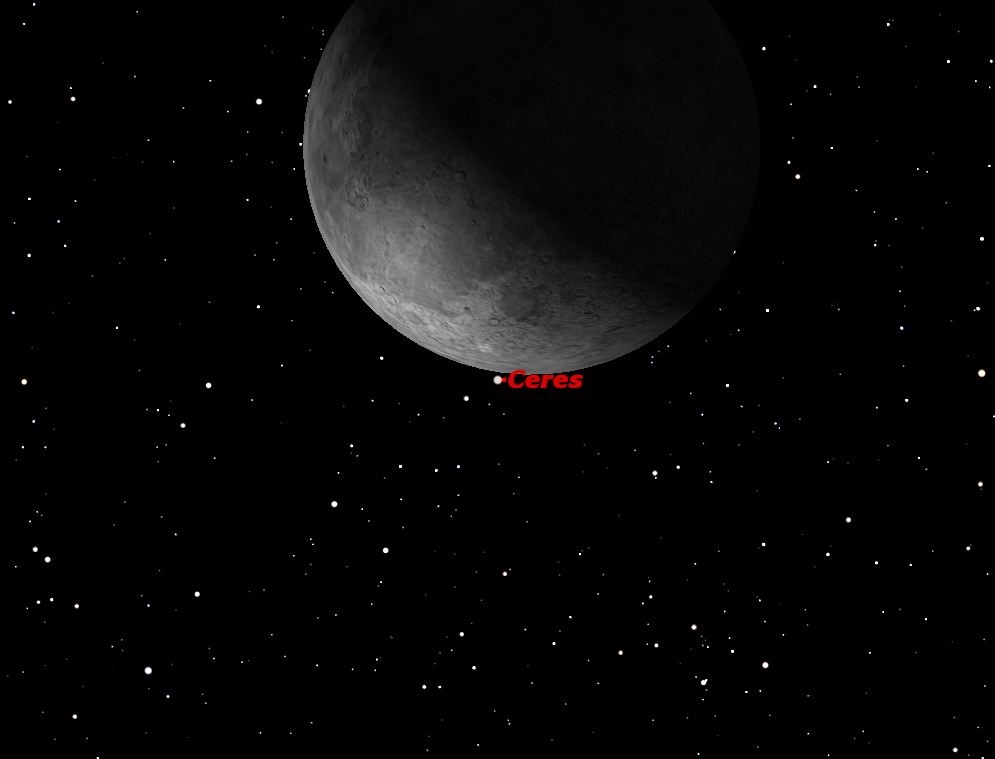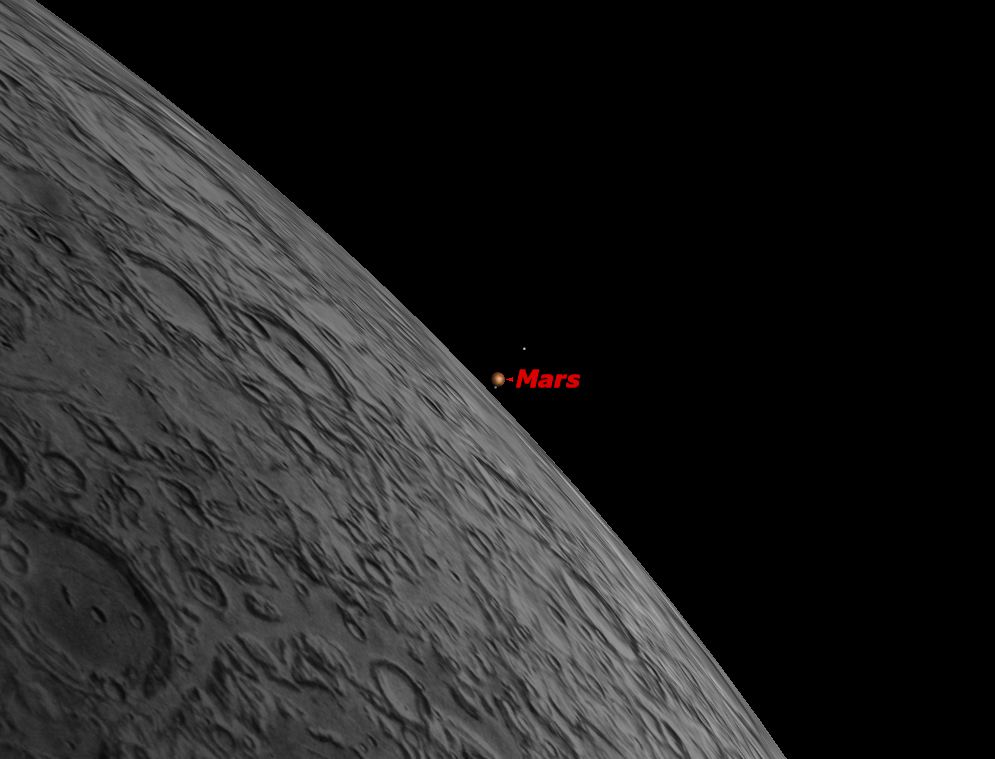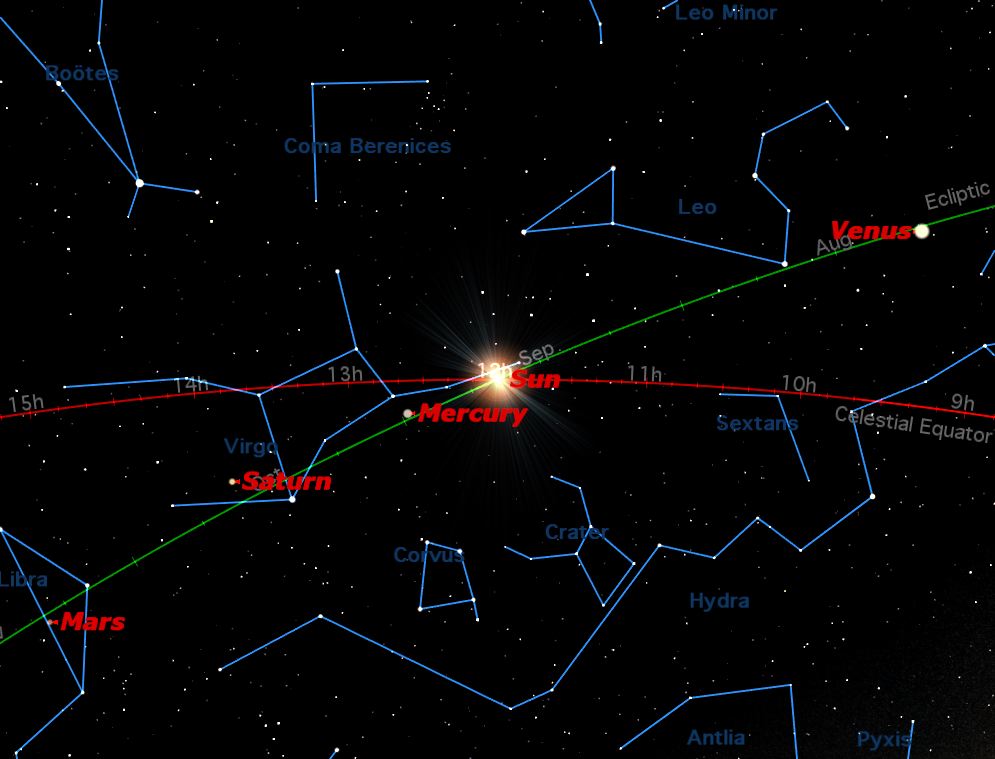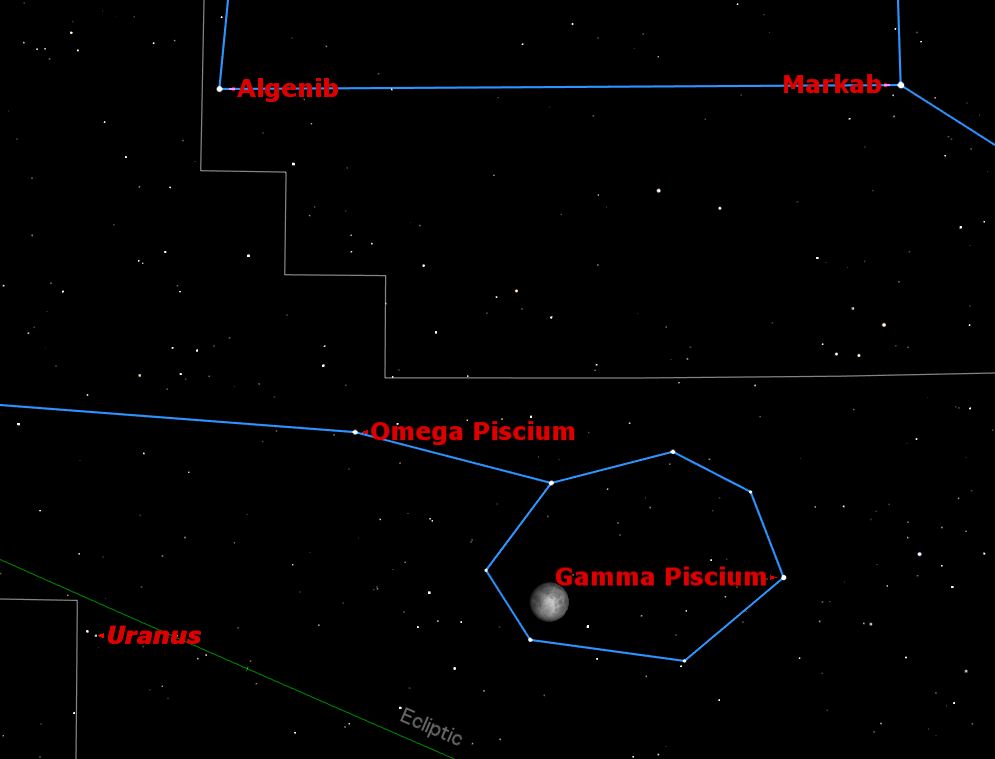September 2012 Night Sky Observing Guide (Sky Maps)
Last Quarter Moon
On Saturday, Sept. 8, the last or third quarter moon rises around 11:15 p.m. and sets around 2:50 p.m. It is most easily seen just after sunrise in the southern sky.
New Moon
On Saturday, Sept.8, the moon is not visible on the date of new moon because it is too close to the sun, but can be seen low in the east as a narrow crescent a morning or two before, just before sunrise. It is visible low in the west an evening or two after new moon.
First Quarter Moon
On Saturday, Sept. 22, the first quarter moon rises around 2:25 p.m. and sets around 12:15 a.m. It dominates the evening sky.
Full Moon
On Saturday, Sept. 29, this is the full moon closest to the fall equinox, on September 22 this year, so is called the harvest moon. In Algonquian it is called the hunter’s moon. Other names are travel moon, dying grass moon and blood moon. In Hindi it is known as kojagiri or sharad purnima or lakshmi puja. Its Sinhala (Buddhist) name is vap. The full moon rises around sunset and sets around sunrise, the only night in the month when the moon is in the sky all night long. The rest of the month, the moon spends at least some time in the daytime sky.
Jupiter Occulted by the Moon
On Sept. 8, 2012, Jupiter and its moons were occulted by the moon as seen from central and southern South America. In North America the moon slipped by just under Jupiter.
Ceres Occulted by the Moon
On Sunday, Sept. 9, the dwarf planet Ceres will be occulted by the moon over most of North America on Sunday morning. Because of Ceres’ small size, 592 miles (952 km.) in diameter, it will appear star-like in even the largest telescopes, but may not wink out instantly when it passes behind the moon, as a star would. This should be most apparent when it re-emerges from behind the dark limb of the moon. The exact times will vary from one location to another, and you should use planetarium software to estimate the times for your location. Some typical times for the beginning of the occultation are 3:44 a.m. EDT for New York, 3:23 a.m. CDT for Chicago, and 1:14 a.m. MDT for Denver. Ceres will re-appear from behind the moon at 4:19 a.m. in New York, 4:18 a.m. in Chicago, 2:10 a.m. in Denver, and 1:02 a.m. PDT in Los Angeles. The occultation begins before the moon rises in Los Angeles.
Mars Occulted by the Moon
On Wednesday, Sept. 19, the moon will occult the planet Mars, but the occultation is visible only from central South America and some of the islands in French Polynesia. The rest of us will see a close conjunction of Mars and the moon, visible just after sunset.
Breaking space news, the latest updates on rocket launches, skywatching events and more!
Equinox
On Saturday, Sept. 22, the sun crosses the celestial equator heading south. This is the autumnal equinox in the northern hemisphere and the vernal equinox in the southern hemisphere.
Pallas at Opposition
On Monday, Sept. 24, the bright asteroid Pallas will be in opposition to the sun in the constellation Cetus, just north of Iota Ceti.
Uranus at Opposition
On Saturday, Sept. 29, you can find Uranus with binoculars near the border between Pisces and Cetus.

Space.com is the premier source of space exploration, innovation and astronomy news, chronicling (and celebrating) humanity's ongoing expansion across the final frontier. Originally founded in 1999, Space.com is, and always has been, the passion of writers and editors who are space fans and also trained journalists. Our current news team consists of Editor-in-Chief Tariq Malik; Editor Hanneke Weitering, Senior Space Writer Mike Wall; Senior Writer Meghan Bartels; Senior Writer Chelsea Gohd, Senior Writer Tereza Pultarova and Staff Writer Alexander Cox, focusing on e-commerce. Senior Producer Steve Spaleta oversees our space videos, with Diana Whitcroft as our Social Media Editor.
